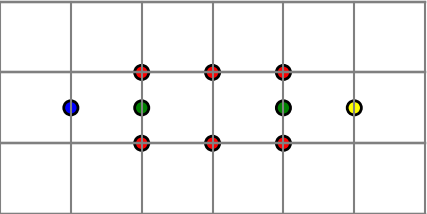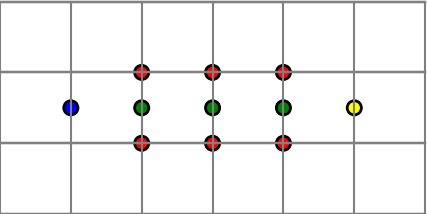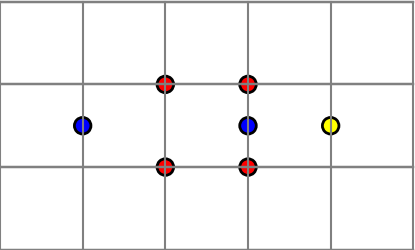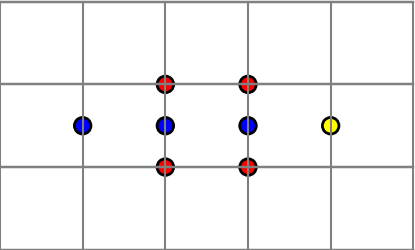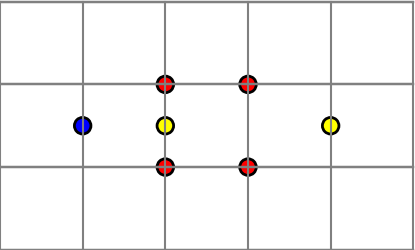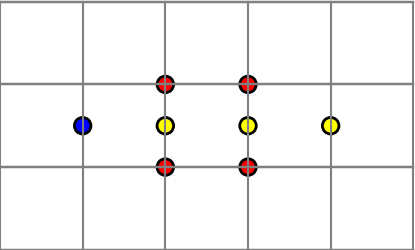The previous post looked at adjoints in the context of linear algebra. This post will look at adjoints in the context of category theory.
The adjoint of a linear operator T between inner product spaces V and W is the linear operator T* such that for all v in V and all w in W,
⟨ Tv, w ⟩W = ⟨ v, T*w ⟩V.
The subscripts are important because the left side is an inner product in W and the right side is an inner product in V. Think of the inner products as pairings. We pair together elements from two vector spaces. An adjunction in category theory will pair together objects in two categories.
Now suppose we have two categories, C and D. An adjunction between C and D is a pair of functors (F, G) with
F: D → C
and
G: C → D
such that
HomC(Fd, c) ≅ HomD(d, Gc)
for every object d in D and c in C. Here “Hom” means the set of morphisms from one object to another. The subscript reminds us what category the morphisms are in. The left hand side is a set of morphisms in C and the right hand side is a set of morphisms in D.
Note the typographical similarity between
⟨ Tv, w ⟩W = ⟨ v, T*w ⟩V
and
HomC(Fd, c) ≅ HomD(d, Gc).
The functors F and G are analogous to the operators T and T*. Sets of morphisms in different categories are analogous to inner products in different spaces.
Fine print
There’s a lot more going on in the definition of adjoint than is explicit above. In particular, the symbol “≅” is doing a lot of heavy lifting. It’s not saying that two sets are equal. They can’t be equal because they’re sets of different things, sets of morphisms in different categories. It means that there is a bijection between the two sets, and the bijection is “natural in d and c.” This in turn means that for every fixed d in D, there is a natural isomorphism between HomC(Fd, -) and HomD(d, G-), and for every fixed c in C there is a natural isomorphism between HomC(F-, c) ≅ HomD(-, Gc). More on this here.
Direction
Note that there is a direction to adjunctions. In the case of linear operators T* is the adjoint of T; it is not necessarily the case that T is the adjoint of T*. In Hilbert spaces, T** = T, but in Banach spaces the two operators might be different.
Similarly, F is the left adjoint of G, and G is the right adjoint of F. This is written F ⊣ G, which implies that direction matters. Adjunctions are from one category to another. It’s possible to have F ⊣ G ⊣ F, but that’s unusual.
Note also that in the case of an adjunction from a category C to a category D, the left adjoint goes from D to C, and the right adjoint goes from C to D. This is the opposite of what you might expect, and many online sources get it wrong.
Hand-wavy examples
Left and right adjoints are inverses in some abstract sense. Very often in an adjunction pair (F, G) the functor F adds structure and the function G takes it away. F is “free” in some sense, and G is “forgetful” in some corresponding sense.
For example, let C be the category of topological spaces and continuous functions, and D the space of sets and functions. Let F be the functor that takes sets and gives them the discrete topology, making all functions continuous functions. And let G be the functor that takes a topological space and “forgets” its topology, regarding the space simply as a set and regarding its continuous functions simply as functions. Then F ⊣ G.
Not every adjunction pair follows the free/forgetful pattern, but most examples you’ll find in references do. As noted above, sometimes F ⊣ G ⊣ F, which could not happen if you always lose structure as you move down the chain of adjunctions.
Other metaphors for left and right adjoints are that left adjoints approximate something from “below” (i.e. with less structure) and right adjoints approximate from “above” (i.e. with more structure). Some say left adjoints are “optimistic” and right adjoints are “pessimistic.” (This reminds me of last weekend’s post about kernels and cokernels: kernels are degrees of freedom and cokernels are constraints.)

